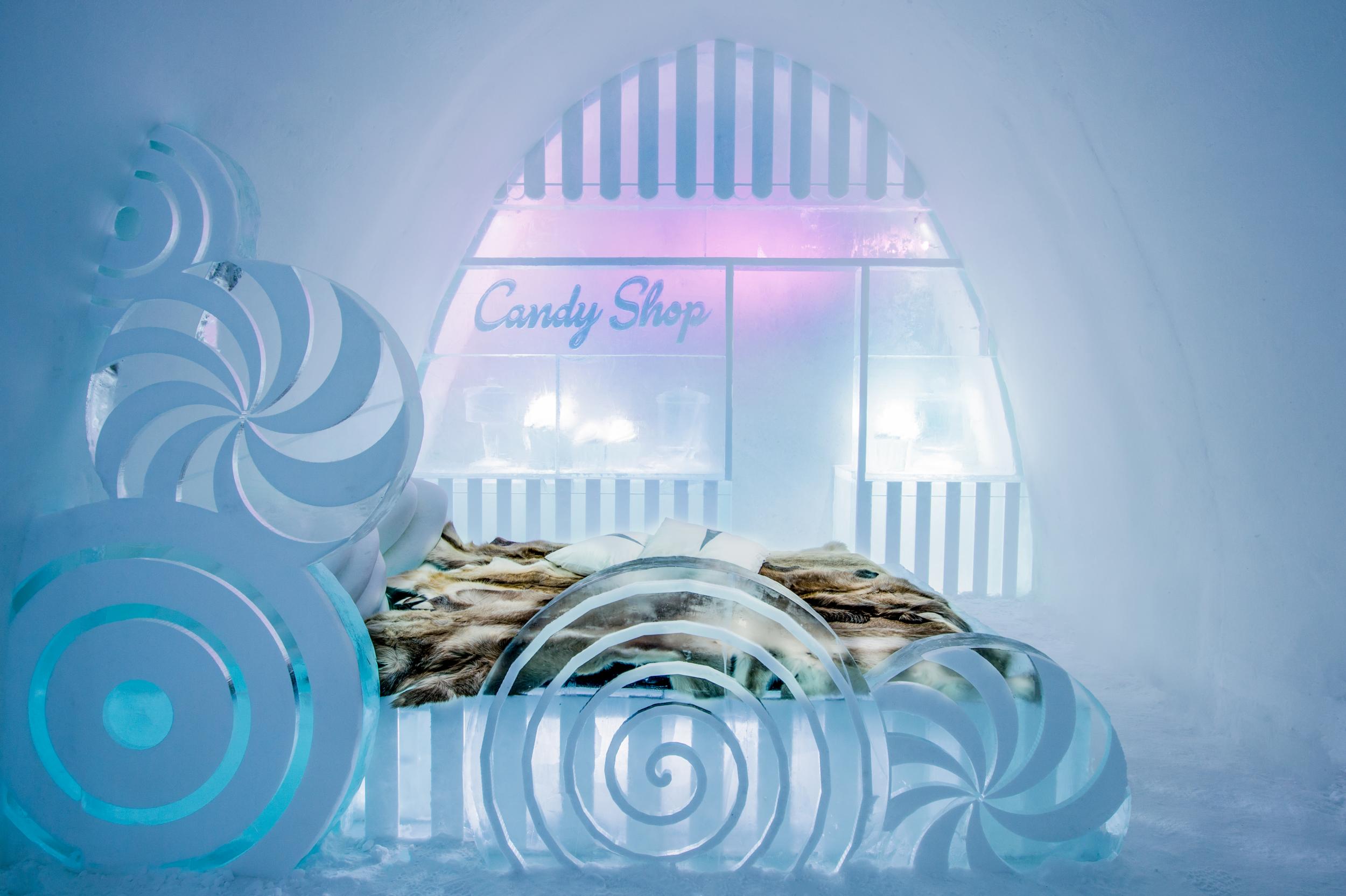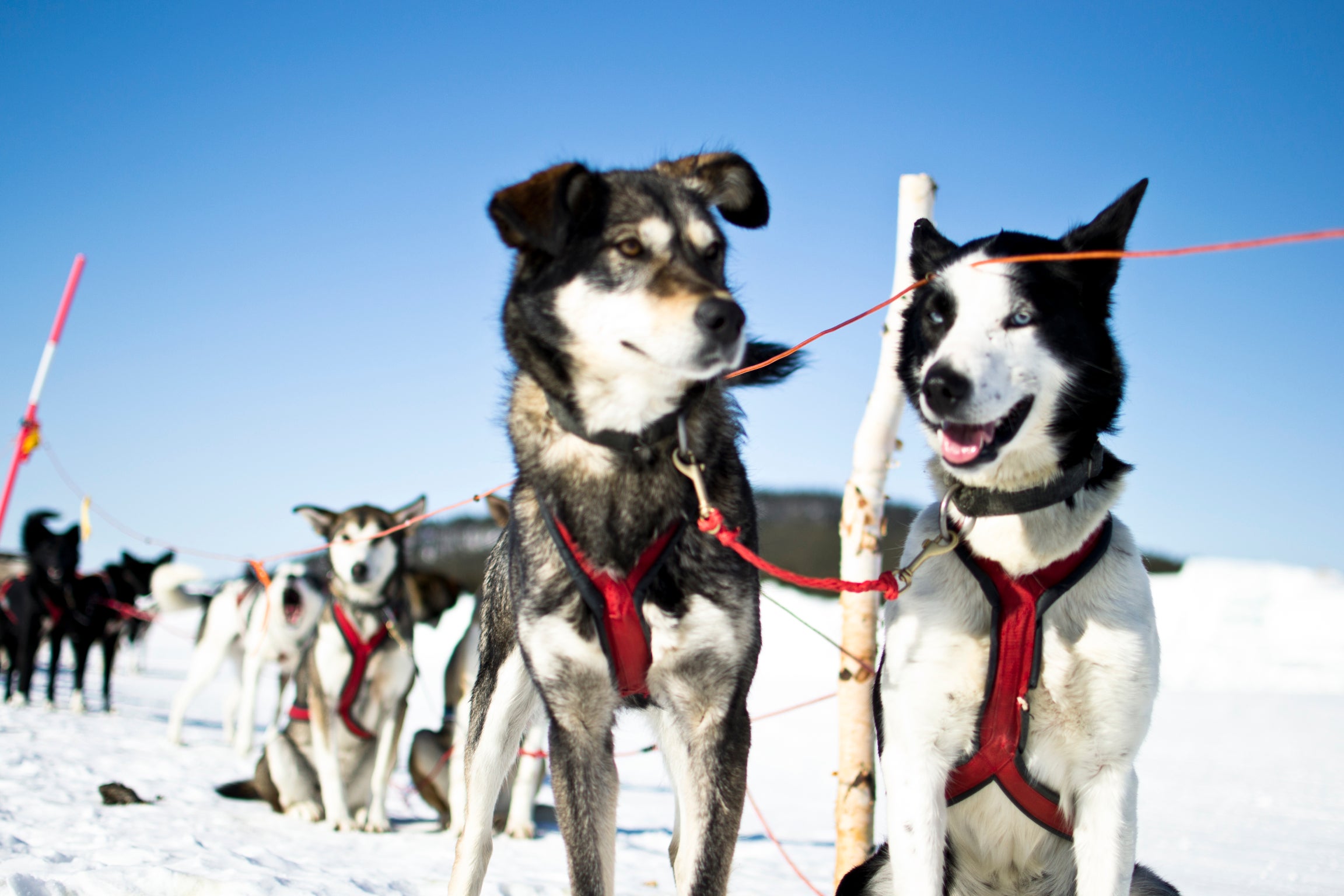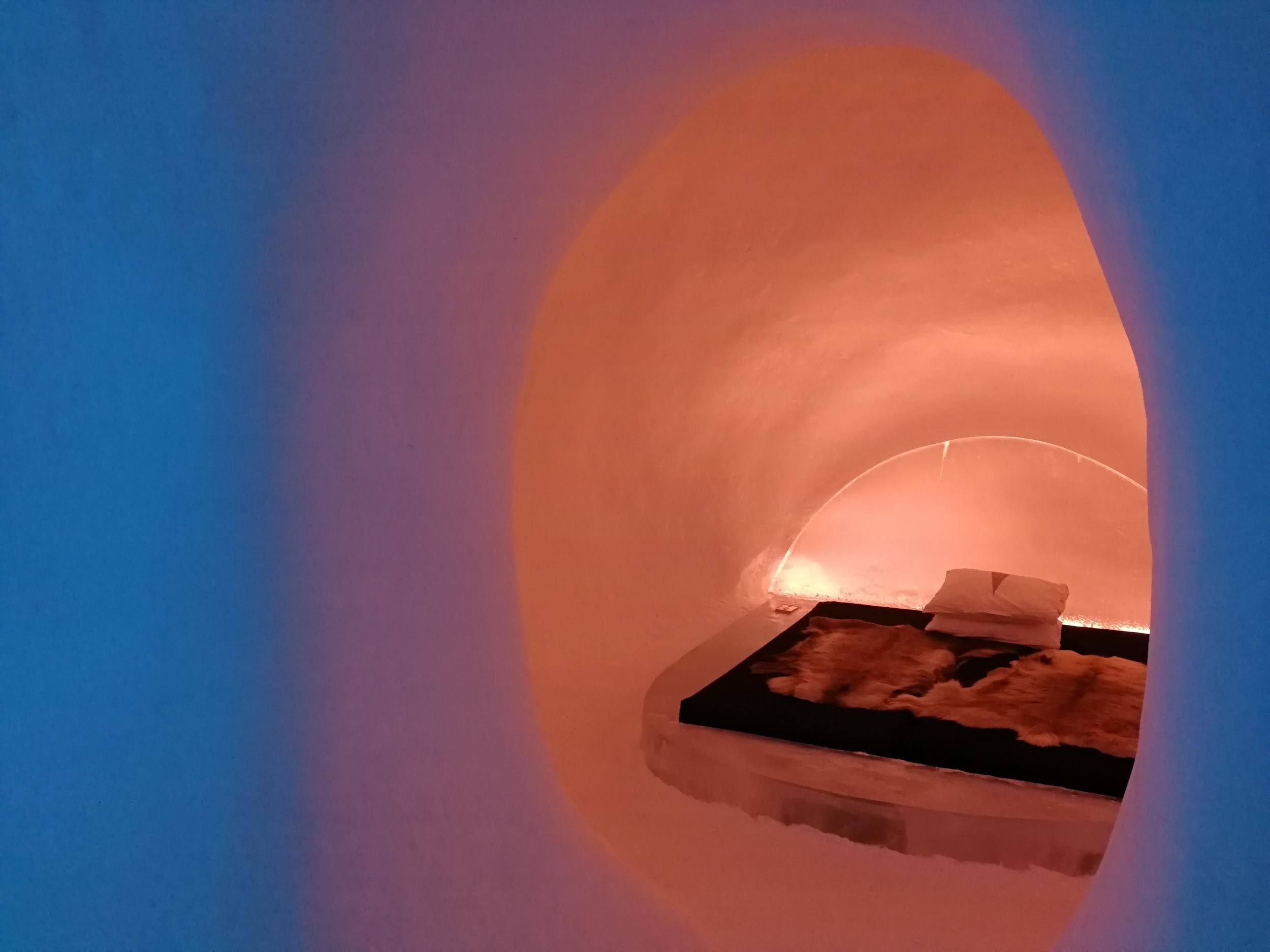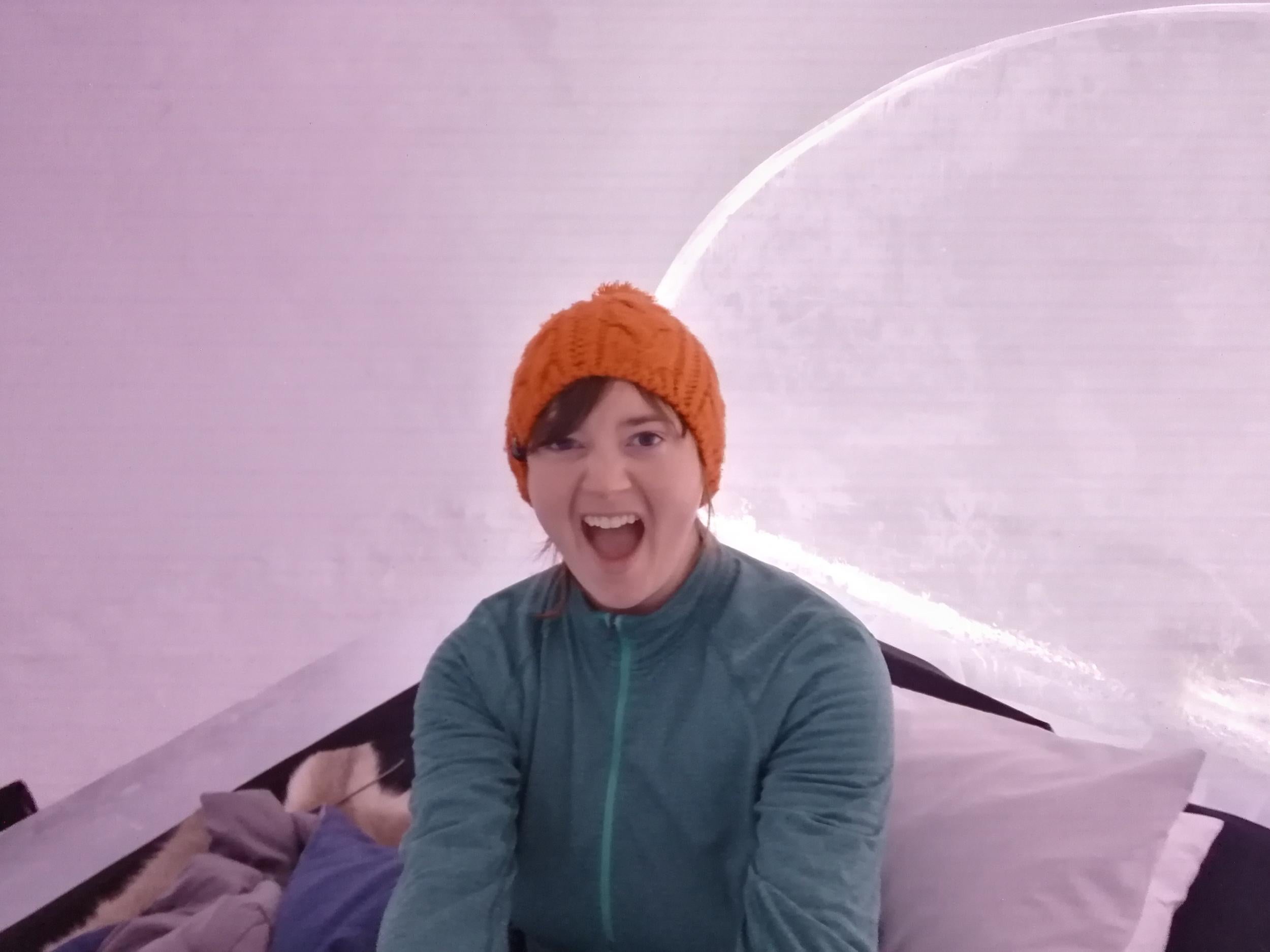Icehotel: What it’s like to spend the night sleeping on a bed of ice in -5C
It may not be the best night’s sleep you’ve ever had, but it’s definitely the coolest, finds Helen Coffey
It’s 9.30pm and I’m reading in the cosy lobby of my hotel, legs curled into a question mark under a chunky knitted blanket with a mulled wine by my side. Well, I say reading. Mainly I’m just staring at the words while my stomach does little nervous/excited bellyflops and I mentally run through my self-imposed schedule over and over again.
At 10pm I’ll change into my PJs. Then I’ll pick up my sleeping bag. Then I’ll go to bed. Then… who knows.
I’m not normally so anal about my sleep routine – but this is no normal hotel, and my room for the night is no normal suite.
This is the Icehotel, and that means tonight I’ll be bedding down on a mattress carved from ice in a room hewn from snow with a top temperature of -5C. I’d be lying if I said I didn’t feel daunted by the prospect.
It’s the 29th incarnation of the hotel, located in Jukkasjärvi near the city of Kiruna in Swedish Lapland; each year the whole thing is made anew, with rooms constructed from scratch in just two weeks by teams of artists from all over the world. This season there are 15 temporary “art suites” on show – one of which is the work of a British father and daughter pair, Jonathan and Marnie Green – and each is totally unique.

Making a room is a once-in-a-lifetime CV credit so it’s a competitive business – the chosen designs were selected out of around 140 entries this year.
There’s a peculiar beauty to the place that comes from its temporality: these rooms, more works of art than sleeping quarters, will be on display from December to March. And then… well, then the sun comes out. Then the hotel in its entirety melts back into the Torne river. Since 2016, the original has also been complemented by Icehotel 365, a permanent addition that offers ice rooms all year round. But the regular hotel remains gloriously ephemeral.
It’s 9.45pm. I anxiously scan the lobby, looking to see if anyone else is already making moves to turn in for the night. Guests are scattered about the place, some reading, some scrolling smartphones, all looking impossibly relaxed. Maybe it’s just me who feels uneasy about dropping off in a below-freezing environment.

Or maybe they’re just pleased it’s warmer than outside. Today things got decidedly nippy in this remote corner north of the Arctic Circle, -30C was recorded at one point, and it was cold enough that when our wilderness skills guide threw hot water from his cup into the air, it froze before it reached the ground. It’s a physics lesson I’m unlikely to forget in a hurry.
There are excursions aplenty on offer at the Icehotel: everything from ice sculpting (I was rather proud of my painstakingly chiselled, haughty-looking owl) to a snowmobiling tour chasing the Northern Lights; from husky sledding to participating in a ritual sauna. But all of these are secondary characters eclipsed by the main player – the opportunity to sleep on ice is what has made this hotel the star of several documentaries, and what draws guests here from all over the world.
It’s what’s drawn me here too, I remind myself. 10pm. It’s go time.

I hastily change into what I’ve been advised is best for keeping warm – counterintuitively, you’re told to forgo multiple layers and thick knitwear in favour of minimalism.
“Just thermal top and bottoms, thin gloves, one pair of socks and a hat – that’s all,” the receptionist recommended at our briefing earlier in the evening. It feels oh so wrong, but they have science on their side – the idea is to leave enough air around you in the sleeping bag, which is heated up by your body and keeps you far toastier than a big jumper would. I’m sceptical but also a natural rule follower, so I strip down and shut up.
I’m given a huge sleeping bag that’s been tested to reassuringly horrific temperatures (-40C) and a thin silky liner to put inside, asked if I’m happy with a 7.30am wake-up call – with a cup of hot lingonberry juice thrown in for good measure – and nodded through with an encouraging smile. I can’t put it off any longer.
Making a quick dash outside between the reception and the hotel, I really do notice how much warmer it is inside the snowy dome compared to the world beyond the walls. Giant ice chandeliers guide my way to my room: number 206. It’s a simple design compared to some of the others – there’s a rounded entrance hall leading through to the room itself, dominated by an ice bed with a half-moon headboard. Within a few minutes I realise it’s all about the lighting, which changes colour slowly, moving through white to soft amber, orange and bright red. It’s mesmerising, and contrasts with the cold blue light of the entrance to dramatic effect.
You’re not lying directly on the ice itself, which is something of a relief; there’s a thin mattress topped with a reindeer skin and pillows to rest your head. Boots off, liner on, I do the ultra inelegant sleeping bag wriggle, popping my phone and an extra layer down the toe end of the bag – if you leave anything out in the room, it will likely freeze. I cinch the top of the bag tight, until there’s only a tiny hole for me to breathe through with the rest of my face mercifully covered. And then I wait for the sweet release of sleep.

At least I’m tired to begin with, a consequence of both the energetic excursions of the day and the fact it’s currently polar night. That means for 25 days the sun never fully rises and sets incredibly early – by around 2.30pm it’s pitch black. It’s playing havoc with my circadian rhythms, making me start yawning by 4pm and meaning I can barely keep my eyes open by 9pm.
The main thing I notice in my room is the silence. The snow muffles every sound, and the run-of-the-mill noises that come with normal hotels – the murmur of other guests, the whir of the heating, the creaking of pipes – simply don’t exist. It should be soothing, but if anything it’s disconcerting for someone from a big city. But the sleeping bag does its job, and I feel, if not warm, fairly temperate as I will myself to drift off.

It feels like it takes hours, but I’ve no way of knowing. Perhaps it’s because I psyched myself up earlier; I feel wired, my brain a hot mess of nonsense, incapable of powering down. The weirdness of the location coupled with the unwieldiness of turning over in the sleeping bag means I only manage to grab pockets of sleep here and there during the night, many of them furnished with crazy, technicolour dreams. In all honesty, it’s a bit of a relief when a friendly voice calls out, “Hello?” come morning, and a staff member hands me my wake-up juice.
Fuggy-headed and disorientated, I sit and admire my room once more without the pressure of slumber to worry about. It really is lovely, I think, as the gently shifting hues help me come to. It hits me that, although I’m the girl who can’t stand camping, who frequently whines about being too cold back home in my flat, I just survived the night in -5C. If I can do that, what can’t I do?
I pull on my boots; pick up my bag; and head outside, ready to laugh in the face of -30C. Bring it on.

Travel essentials
Discover The World offers a three-night Classic Icehotel Break from £1,073pp based on two sharing, B&B, including return direct flights from London Heathrow to Kiruna. Book an Icehotel holiday with Discover the World by 14 January 2019 (quoting ICE10) to save up to £150pp (10 per cent) during December 2018 and January 2019.


Join our commenting forum
Join thought-provoking conversations, follow other Independent readers and see their replies
Comments